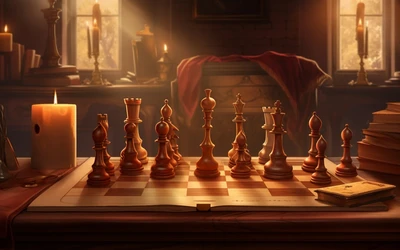
Getting a peak bullet rating 2636 at age 50 :)
I managed to exceed my peak bullet rating on 9th September 2021 in the Lichess Daily BulletHi Guys
I passed my peak bullet tournament in the Lichess Daily bullet of
9th September 2021
If you want to see my live commentary, it will be here:
https://youtu.be/di6W%5fi3NiJA
Learning from Mikhail Tal
I think my recent intensive study of Tal games (particularly the shorter ones) has increased my awareness of chess tactics. In particular, I am kind of dissecting the concept of "weakness of the last move" more into various kinds of self destruct moves which one should intuitively be aware one is doing such as:
Self-deflecting
Self-pinning
Self-interfering
Self-unprotect pieces
etc
Each of these kinds of self-destructive moves is like the "Blunders all waiting to be made" as the witty Saveilly Tartakower once said.
An example of a self-deflection type move ( a specific instance of a "weakness of last move") is:
Ng1-f3 (imagine this move on a theoretical board position!)
When making such a move, the knight has in fact self deflected and not covering e2 and h3. During an actual game, self-deflections happen all the time and it was my primary type of "weakness of the last move" that I had in mind. When one sees such a move, the opportunities sometimes immediately arise from say Qe2 or Qh3 - so these are kind of very emergent opportunities that arise on the chessboard just from the last move and the type of weakness it really represents.
If one is aware one is doing a "self-pin" then the same rules of active "pinning apply" - imagine the squares of the pinned piece are not really controlled, etc. The leverage gained by having a detailed view of all types of self-destruct moves is kind of useful in my view.
One of the most dramatic examples of such a self-destruct move, lured by the gain of a piece was actually this game in my view:
It is remarkable how Rxc3 subtly weakening f8 (self-deflection in effect weakening f8) could have such a major impact when combined with other issues.
Complexity as a weapon
I am starting to see that Tal used complications as a tool to beat many opponents, and was kind of acutely aware it seems of various types of "self-destruct" moves and pretty optimistic that these would actually occur. Overall they did occur, and Tal even after 1960 was well in the top players in the world for the next 20+ years. With complications arising on the chessboard, combined with a little optimism opponents would invariably self-destruct, and the means by which to severely punish such moves, Tal was an extremely dangerous opponent who many feared the most for being another brilliancy game where they are the victim!
Hope you enjoyed this blog :). Any likes and follows are really appreciated. Also, I also have some interesting chess courses at https://kingscrusher.tv/chesscourses to check out.Cheers, K
Cheers, K
You may also like
 FischyVishy
FischyVishyFabiano Caruana vs. The French Defense - Early Beginnings (Part 1)
This series of articles will cover Fabiano Caruana's games against the French Defense since the begi… CM Kingscrusher-YouTube
CM Kingscrusher-YouTubeThe Complete Guide to Chess Opening Principles -"King Safety Driven Development"
An unexpected perspective on the classic golden chess opening principles CM Kingscrusher-YouTube
CM Kingscrusher-YouTubeTaking away King escape squares creates good luck
As Capablanca saids "A good player is always lucky" - which begs the question - can we create luck? CM Kingscrusher-YouTube
CM Kingscrusher-YouTubeThe importance of Chess Visualisation skills
Reminders abound for the importance of chess visualisation skills thibault
thibaultHow to ask technical questions
Simple guidelines to get quick and actionable answers thibault
thibault